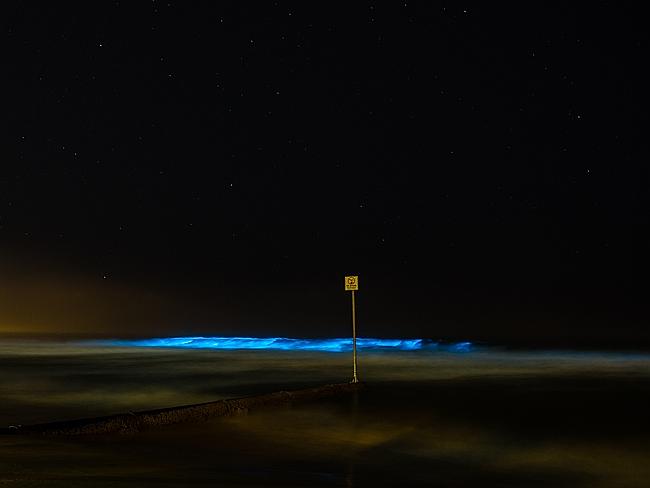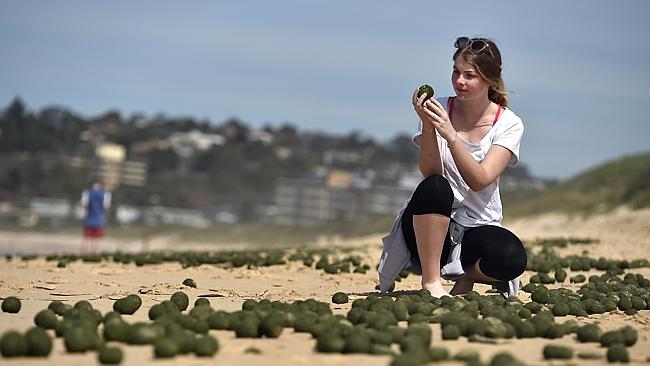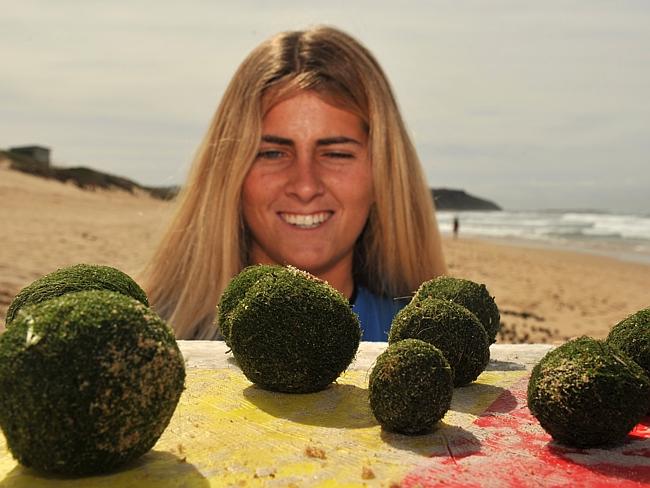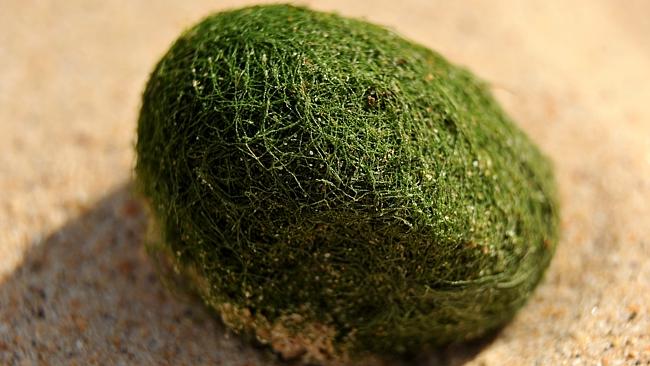Dee Why Surf Life Saving Club patrol member Rae-Maree Hutton said she came across the unusual sight on her morning walk.
"I didn't want to touch one because you never know what can sting you on the beach, but I did poke it with my toes and it's squishy, like a sponge," Ms Hutton.
"They look like alien eggs or something."
Narraweena resident Jenny Zhang said she walked the beach every day and had never seen anything like it.
"About three days ago, there were a few egg-shaped balls but then today, they were much bigger and everywhere on the beach," Ms Zhang said.
"I tried to search on the internet but there was no information.
"They look like Japanese moss balls but they're not made of moss, maybe seaweed."
The green visitors follow hot on the heels of small bioluminescent marine animals that turned Manly and Newport beaches blue at the end of August.
For Allambie Heights resident Roxie Rogan, the balls prompted a bit of beach sport.

"There were a lot of people looking at them."
University of NSW School of Biological, Earth and Environmental Sciences associate professor Alistair Poore said the balls were most likely living green algae.
"They're pretty interesting," Mr Poore said.
"I've seen similar things - sometimes dead sea grass can roll around and form balls like underwater tumbleweeds but that's made of dead material and these look to be living."
"I think you'd find that they're very likely to be the green algae.
"It is a habit known as 'aegagropilious', where the alga is free living (not on rocks) and forms into spherical balls."






Reader Comments
to our Newsletter